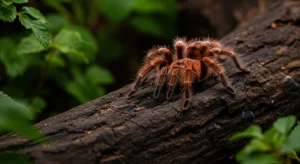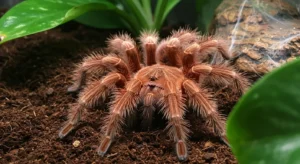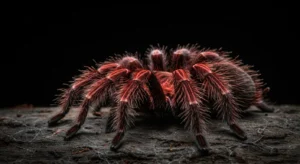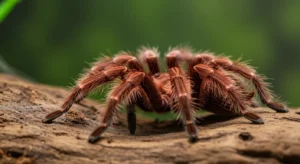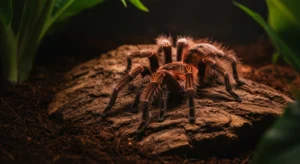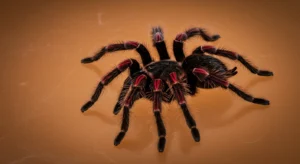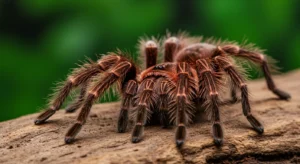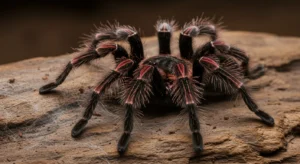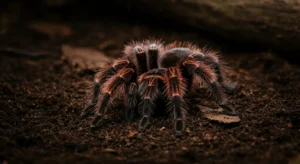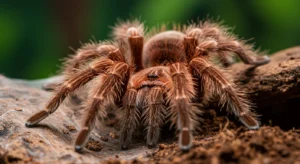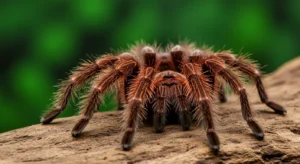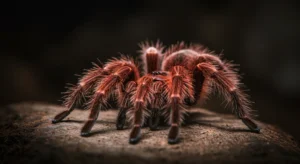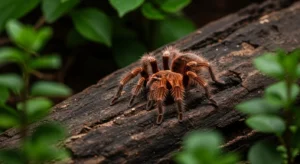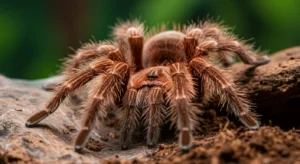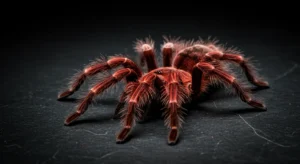Breeding Chilean Rose Tarantulas: A Beginner’s Guide to the Complex Process
Introduction: Is Breeding Right for You?
Breeding Chilean Rose Tarantulas (*Grammostola rosea*) can be a fascinating endeavor, but it’s not something to be undertaken lightly. It requires careful planning, dedicated resources, patience, and an understanding of the significant risks involved, particularly for the male tarantula. Furthermore, a successful pairing can result in dozens or even hundreds of spiderlings, requiring individual housing and care. Ensure you have the capacity and commitment before attempting to breed.
Ethical Considerations: Only breed healthy, well-established adults. Be prepared to care for or find responsible homes for potentially numerous offspring.
Sexing Your Tarantulas
Successfully breeding requires a sexually mature male and female. Accurate sexing is essential.
- Mature Males: Develop specialized structures upon maturity:
- Emboli (Palpal Bulbs): Bulbous tips on the pedipalps, used to transfer sperm. Look like tiny “boxing gloves.”
- Tibial Hooks/Apophyses: Spurs on the underside of the first pair of legs, used to hook the female’s fangs during mating.
- Males are often smaller and leggier than females and have a shorter lifespan after maturing.
- Females: Lack emboli and tibial hooks. They are generally larger and more heavy-bodied. The most reliable way to sex a female (or immature tarantula) is by examining the inside of a shed exoskeleton (molt) for the presence of the spermatheca between the first pair of book lungs.

Pre-Breeding Conditioning
Ensure both the male and female are healthy and well-fed before attempting an introduction. This increases the chances of successful mating and egg sac production.
- Feeding: Feed both tarantulas generously in the weeks leading up to the pairing attempt. A well-fed female is less likely to see the male purely as a meal.
- Health Check: Ensure both are active, have good body condition, and have molted relatively recently (especially the male, as mature males typically only live 6-18 months post-maturity molt).
Introducing the Pair
This is the most critical and potentially dangerous step. **Always introduce the male into the female’s enclosure.** Her enclosure is her territory, and placing her in his might cause undue stress or aggression.
- Prepare the female’s enclosure: Ensure it’s clean, has adequate space, and the female is visible and not hidden deep within a burrow. Remove any leftover prey items.
- Gently introduce the mature male into her tank, preferably at some distance from her.
- Supervise **constantly and closely** with tools ready (like long tongs or a soft brush) to intervene if necessary.
Successful pairing Chilean rose tarantulas successfully requires vigilance.
The Mating Process
If interested, the male will often begin drumming or vibrating his legs and pedipalps on the substrate, sending signals to the female.
- Female Response: A receptive female may drum back or simply remain still, allowing the male to approach. An unreceptive or hungry female may display aggression (threat pose, striking).
- The Approach: The male will cautiously approach, continuing to drum.
- Hooking Fangs: If the female is receptive, the male will attempt to hook her fangs with his tibial hooks to prevent being bitten.
- Insertion: He will then lift her slightly and insert his emboli (palpal bulbs) into her epigastric furrow (where the spermatheca are located) to transfer sperm. This process can be very quick.
- Retreat: After successful insertion, the male will quickly try to disengage and retreat.
Immediate Separation: Separate the male immediately after mating (or if severe aggression occurs). The female’s disposition can change rapidly, and cannibalism post-mating is a real risk.
Post-Mating Care (Female)
- Continue feeding the female well. Good nutrition is vital for egg development.
- Maintain optimal temperature and humidity levels.
- Minimize disturbances to reduce stress.
Egg Sac Production
If mating was successful, the female *may* produce an egg sac weeks or even months later. This is not guaranteed.
- Signs: She may web heavily, become more defensive, and spend time constructing a silken sac.
- Laying: She will deposit eggs onto a silk mat and then bundle them into a spherical or hammock-like sac.

Incubation and Spiderling Care
Keepers have two options:
- Leave with Mother: Allow the female to incubate the sac naturally. She will turn and tend to it. Monitor humidity carefully. Risk of her eating the sac exists.
- Artificial Incubation: Carefully remove the egg sac after 3-4 weeks and place it in an incubator (a container with slightly damp substrate or hanging over water, ensuring good ventilation). This allows better monitoring and control but requires specific setup.
- Hatching: Spiderlings (slings) emerge from the sac after several weeks (typically 6-10 weeks, temperature dependent), initially as immobile “eggs with legs” (postembryos), then molting into first instar slings.
- Separation: Once mobile, slings must be separated into individual small containers (e.g., deli cups with pinholes and moist substrate) to prevent cannibalism.
- Feeding Slings: Offer pre-killed pinhead crickets or flightless fruit flies once they begin to disperse and darken slightly.
The ideal [incubation time for tarantula egg sac](https://www.lopehare.com/tarantula-medical-information/) can vary based on temperature.
Risks and Challenges
- Injury or death of the male during mating attempts.
- Female not producing an egg sac.
- Female eating the egg sac.
- Infertile eggs or sac failing (mold, drying out).
- Caring for potentially hundreds of fragile spiderlings.
- Finding responsible homes for offspring.
Conclusion
Breeding Chilean Rose Tarantulas is a complex process with inherent risks and significant responsibilities. It requires thorough research, preparation, and constant supervision during introductions. While witnessing the life cycle can be rewarding, potential breeders must be fully aware of the challenges, especially the need to care for numerous offspring. It is generally recommended for experienced keepers who are prepared for all potential outcomes.
Information based on established practices within the tarantula breeding community and general arachnid reproductive biology.
